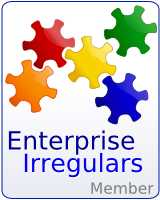Salesforce.com OEM thoughts
However, some limitations were pointed:
1. Limit of 50 custom objects and 5 custom tabs. The ISV can create up to 5 tabs of their own, but no more. This means that the user can't get extra functionality that needs another tab. For example, there is an expense tracker available in the AppExchange, but since it needs another tab and most ISVs use all 5 tabs, the user can't install it.
Limit of 5 tabs will drive user to SFdC CRM product. Long term this will mean a whole new market for SFdC, not for the vendors. Buyer may start with OEM product, but won't stay on it a long time because of tab limit. "Oh, I guess, I'll just buy Professional edition and pick up the ISV's(e.g., Remend) app in AppExchange." My understanding is that the ISV has greater revenue from the OEM product than the AppExchange addon.
Some of the pre-built connectors built to link SFdC to other applications (ERP etc) may not work with the OEM platform products. Missing hooks into some objects (contact, deal). Object is a record type
- e.g., Any connector referring to the Opportunities tab will run into problems as this tab doesn't exist on the OEM platform product
4. ISV selling app thru AppExchange has to handle billing on its own. For example, the link from AppExchange goes back to the ISV website for billing, authentication etc. AppStore is likely the way they are going to introduce billing into AppExchange.





